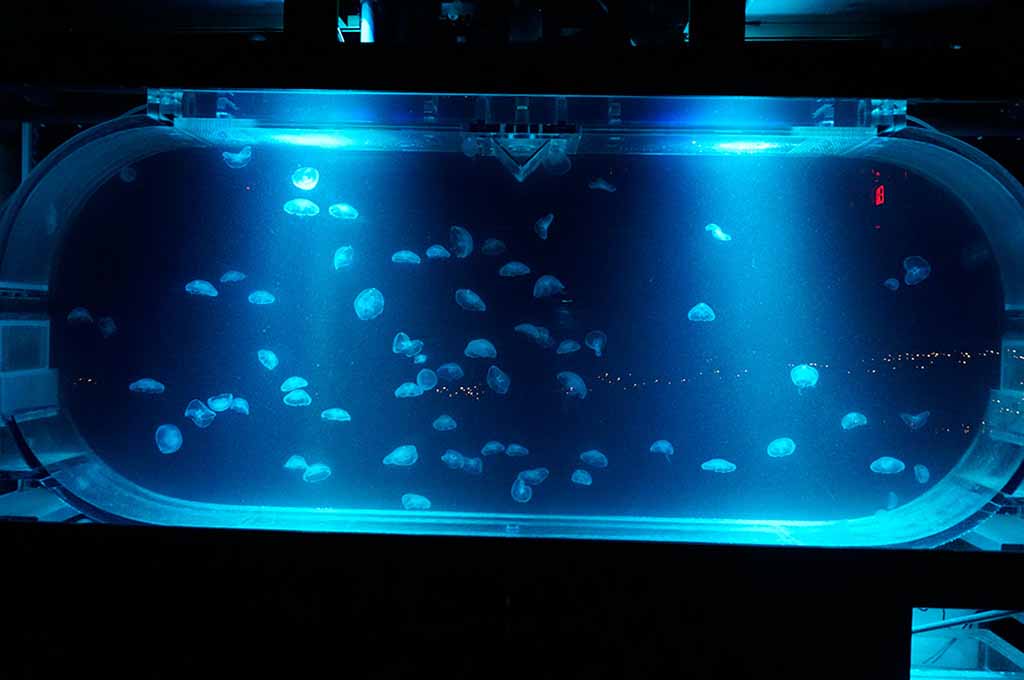How to Build a Jellyfish Tank in Home
23 Jul 2024
0 Comments
Building a jellyfish tank at home requires careful planning and specialized equipment, as jellyfish have specific needs that differ from typical fish. Here’s a step-by-step guide to help you set up a jellyfish tank:
1. Research and Planning
- Understand Jellyfish Requirements: Jellyfish need a round or cylindrical tank with a gentle water flow to prevent them from getting stuck in corners or against filtration intakes. They are also sensitive to water quality and temperature.
-
Species Selection: Choose a species suitable for home aquariums, such as Moon Jellyfish (Aurelia aurita), which are relatively hardy and easier to care for.
2. Tank Selection
- Specialized Tank: Purchase a tank specifically designed for jellyfish, often called a "kreisel" tank, which provides a circular flow to keep jellyfish suspended.
- Size: Ensure the tank is large enough to accommodate the jellyfish as they grow. A minimum of 20 gallons is recommended for a few small jellyfish.
3. Equipment and Supplies
- Filtration System: Use a gentle, jellyfish-safe filtration system to maintain water quality without creating strong currents.
- Heater and Thermometer: Maintain a stable temperature appropriate for your jellyfish species. Moon jellyfish typically thrive in temperatures between 62-68°F (17-20°C).
- Lighting: Use LED lights to illuminate the tank without overheating it. Blue or color-changing LEDs can enhance the visual appeal of the jellyfish.
-
Air Pump and Air Stone: To provide additional aeration and ensure proper gas exchange.

4. Setting Up the Tank
- Assemble the Tank: Follow the manufacturer’s instructions to set up the tank and install the filtration system, heater, and thermometer.
- Add Water: Fill the tank with dechlorinated water or use marine salt mix to create saltwater if keeping marine jellyfish. Use a hydrometer to measure the salinity, which should be around 1.023-1.025 for marine species.
-
Cycle the Tank: Just like any other aquarium, the tank needs to be cycled to establish beneficial bacteria that break down waste. This process can take several weeks. You can speed up cycling by adding bottled bacteria supplements.
![X park水族館[下篇] - May執念與直唸 - udn部落格](https://live.staticflickr.com/65535/51356187473_b9fef1ec25_c.jpg)
5. Adding Jellyfish
- Acclimation: When your tank is fully cycled and stable, acclimate your jellyfish to the tank water gradually to avoid shock. Float the jellyfish in a bag in the tank for 15-20 minutes to equalize the temperature, then slowly mix tank water into the bag over the next 30-60 minutes.
- Release: Gently release the jellyfish into the tank.
6. Ongoing Maintenance
- Regular Water Changes: Perform regular water changes (10-20% weekly) to maintain water quality.
- Monitor Water Parameters: Regularly test the water for ammonia, nitrites, nitrates, pH, and salinity. Jellyfish are sensitive to poor water conditions.
- Feeding: Feed your jellyfish appropriately-sized live or frozen food such as brine shrimp or specially formulated jellyfish food. Feed small amounts multiple times a day.
7. Observations and Adjustments
- Health Monitoring: Observe your jellyfish regularly for signs of stress or illness, such as shrinking or irregular swimming patterns.
-
Adjustments: Make any necessary adjustments to water flow, temperature, or lighting to ensure a suitable environment for your jellyfish.

Tips
- Backup Plan: Have a backup plan for power outages, as jellyfish tanks require constant filtration and aeration.
- Avoid Overcrowding: Keep the tank lightly stocked to avoid overloading the filtration system and maintain water quality.
Building a jellyfish tank can be rewarding, but it requires careful attention to detail and ongoing maintenance to ensure the delicate creatures thrive.
Tags:













































































































